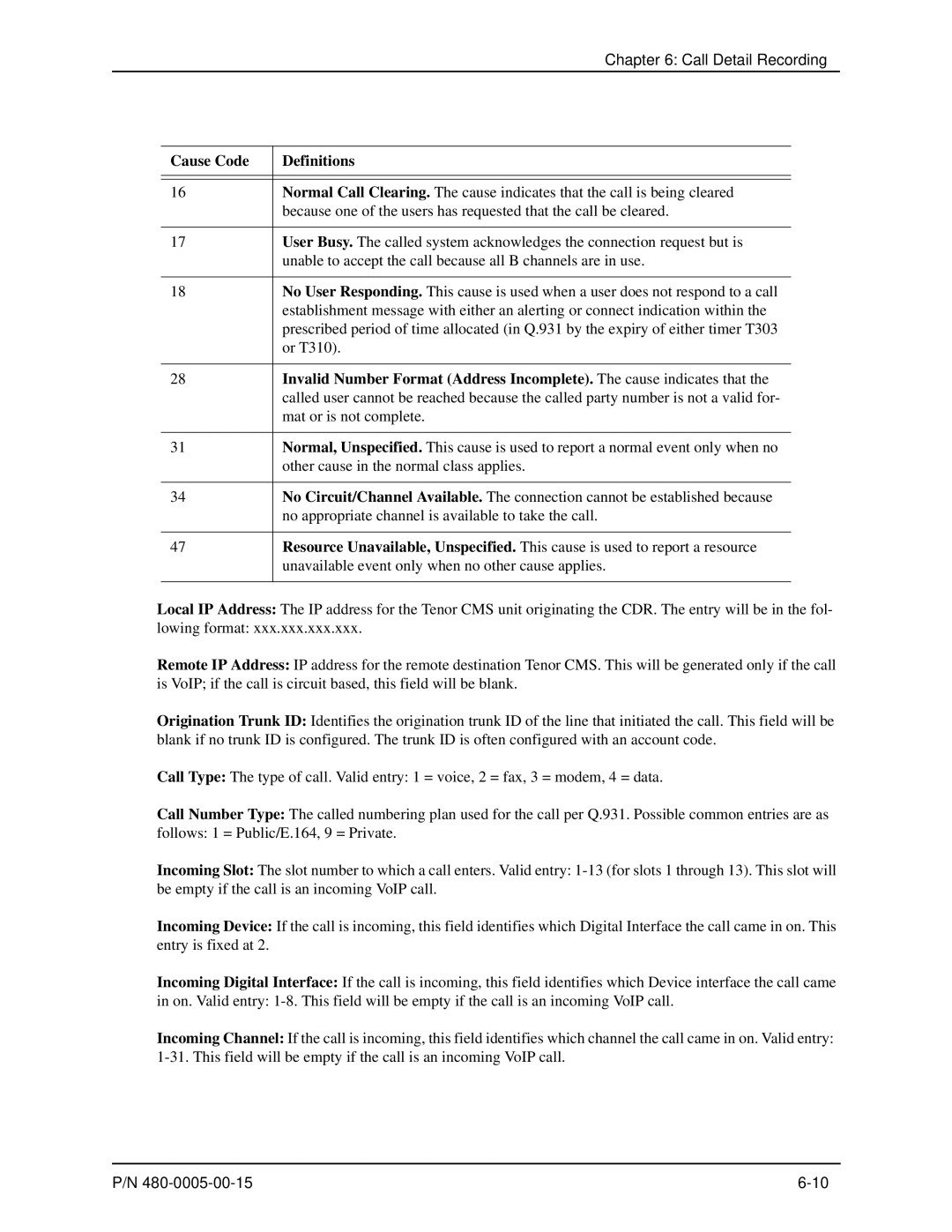
Chapter 6: Call Detail Recording
Cause Code | Definitions |
16Normal Call Clearing. The cause indicates that the call is being cleared because one of the users has requested that the call be cleared.
17User Busy. The called system acknowledges the connection request but is unable to accept the call because all B channels are in use.
18No User Responding. This cause is used when a user does not respond to a call establishment message with either an alerting or connect indication within the prescribed period of time allocated (in Q.931 by the expiry of either timer T303 or T310).
28Invalid Number Format (Address Incomplete). The cause indicates that the called user cannot be reached because the called party number is not a valid for- mat or is not complete.
31Normal, Unspecified. This cause is used to report a normal event only when no other cause in the normal class applies.
34No Circuit/Channel Available. The connection cannot be established because no appropriate channel is available to take the call.
47Resource Unavailable, Unspecified. This cause is used to report a resource unavailable event only when no other cause applies.
Local IP Address: The IP address for the Tenor CMS unit originating the CDR. The entry will be in the fol-
lowing format: xxx.xxx.xxx.xxx.
Remote IP Address: IP address for the remote destination Tenor CMS. This will be generated only if the call is VoIP; if the call is circuit based, this field will be blank.
Origination Trunk ID: Identifies the origination trunk ID of the line that initiated the call. This field will be blank if no trunk ID is configured. The trunk ID is often configured with an account code.
Call Type: The type of call. Valid entry: 1 = voice, 2 = fax, 3 = modem, 4 = data.
Call Number Type: The called numbering plan used for the call per Q.931. Possible common entries are as
follows: 1 = Public/E.164, 9 = Private.
Incoming Slot: The slot number to which a call enters. Valid entry:
Incoming Device: If the call is incoming, this field identifies which Digital Interface the call came in on. This entry is fixed at 2.
Incoming Digital Interface: If the call is incoming, this field identifies which Device interface the call came
in on. Valid entry:
Incoming Channel: If the call is incoming, this field identifies which channel the call came in on. Valid entry:
P/N |
